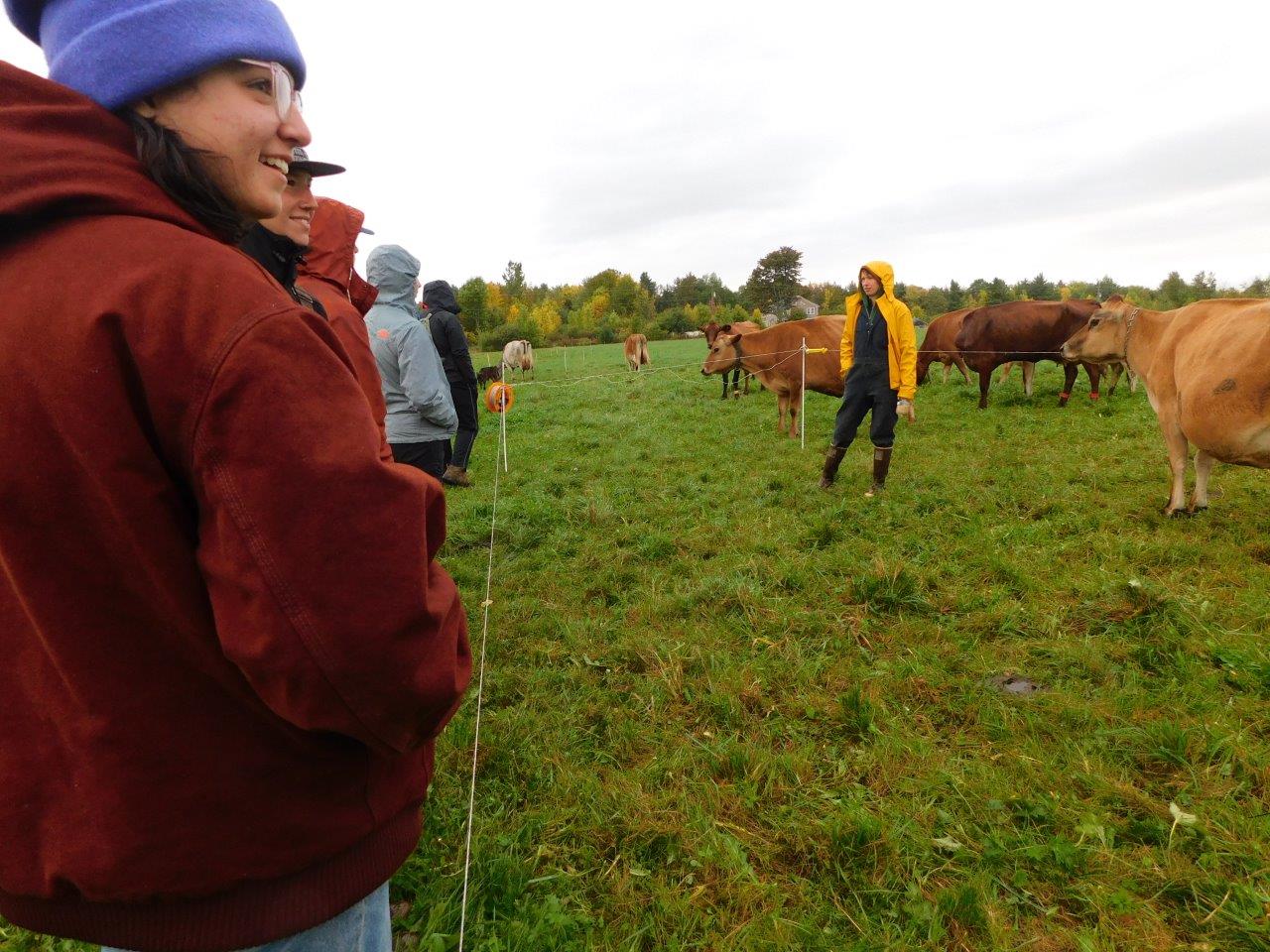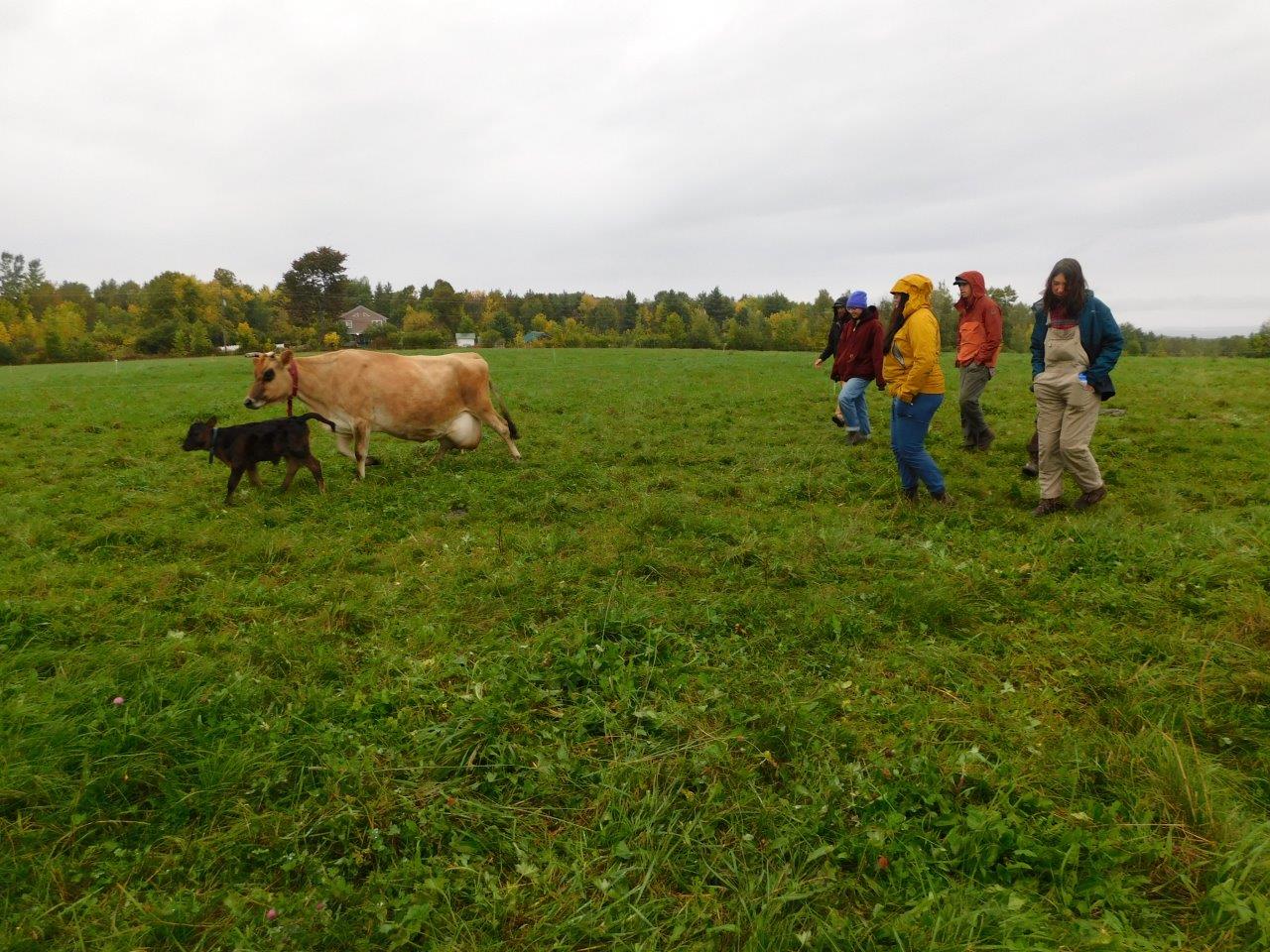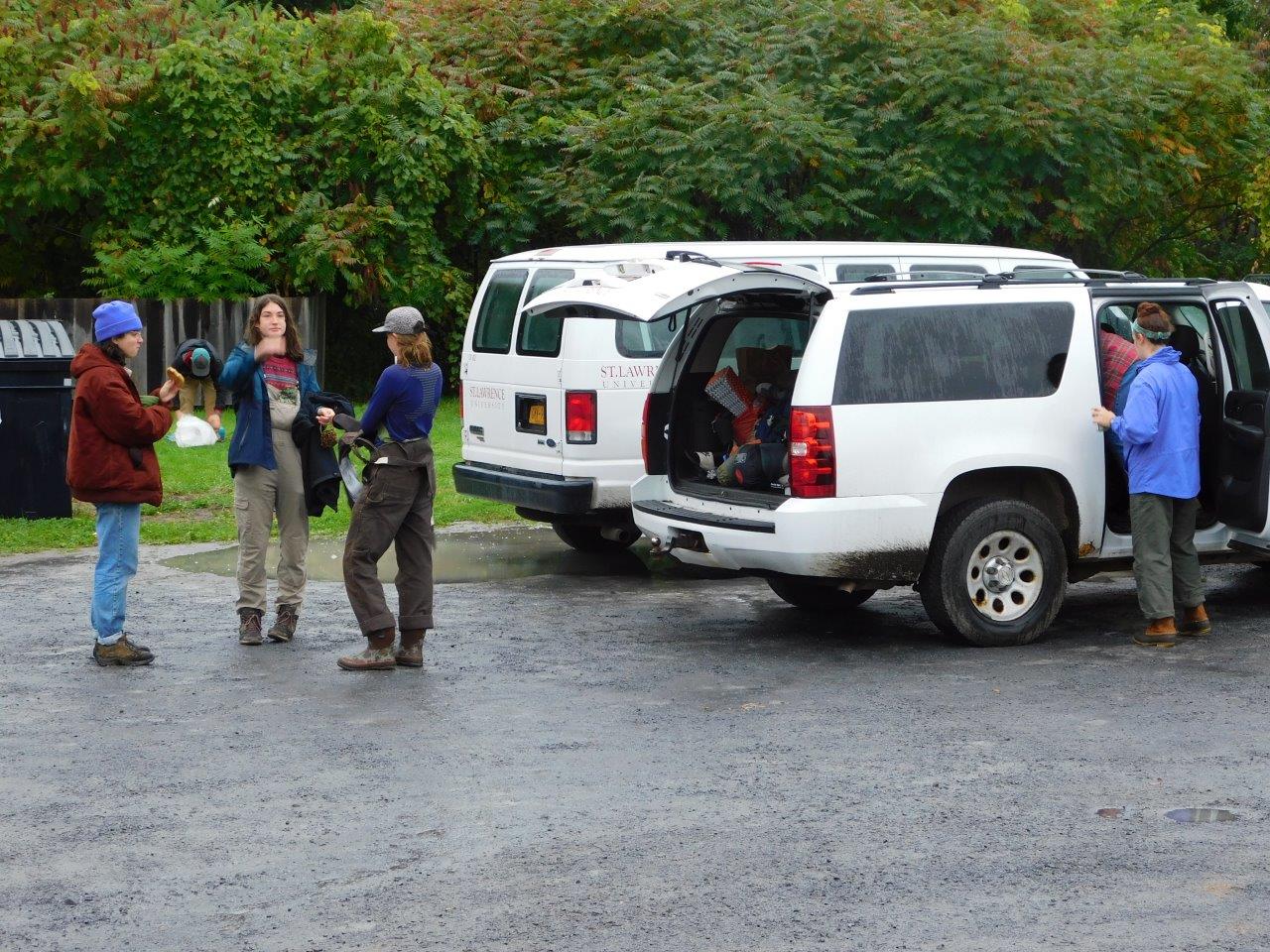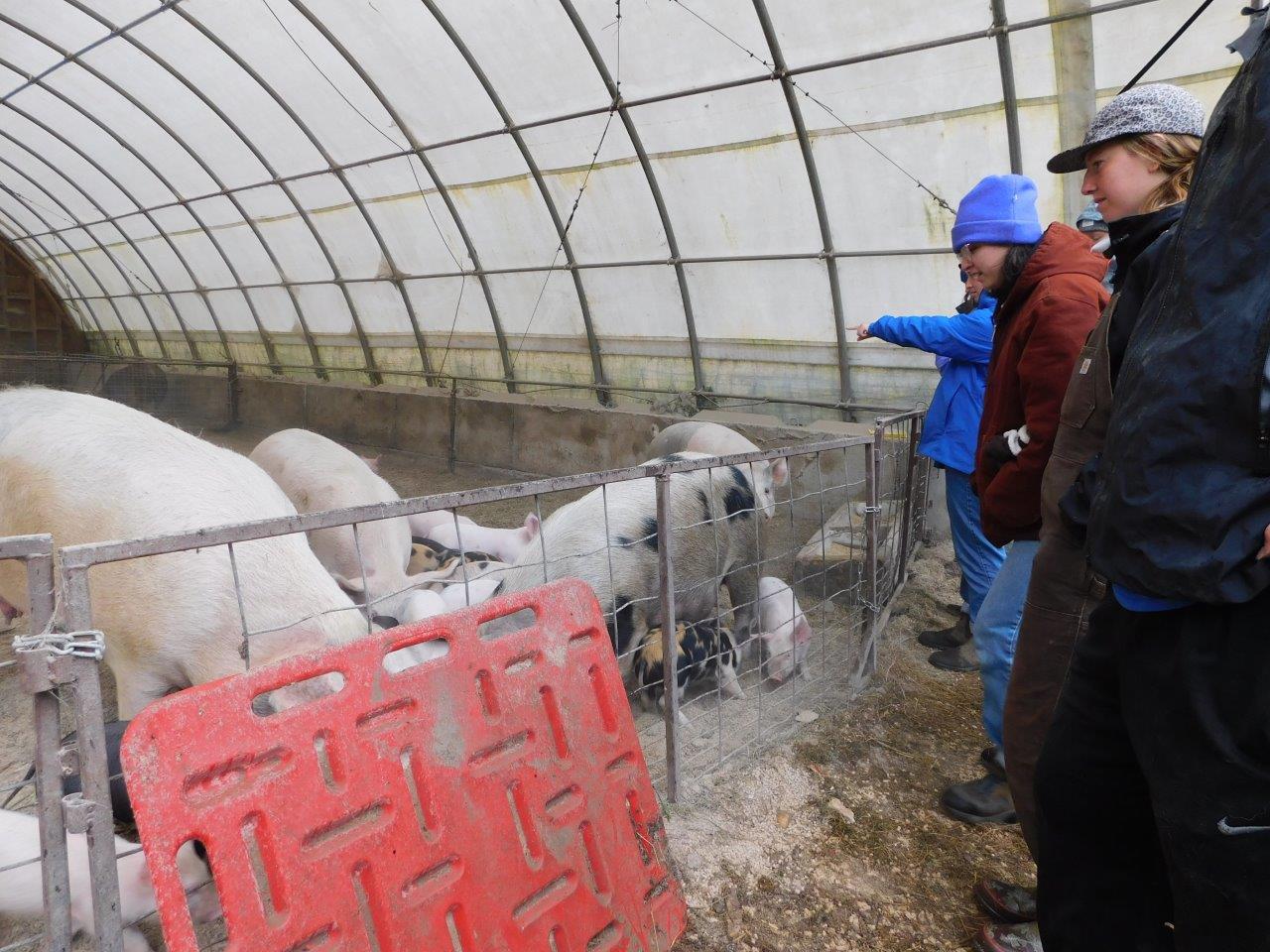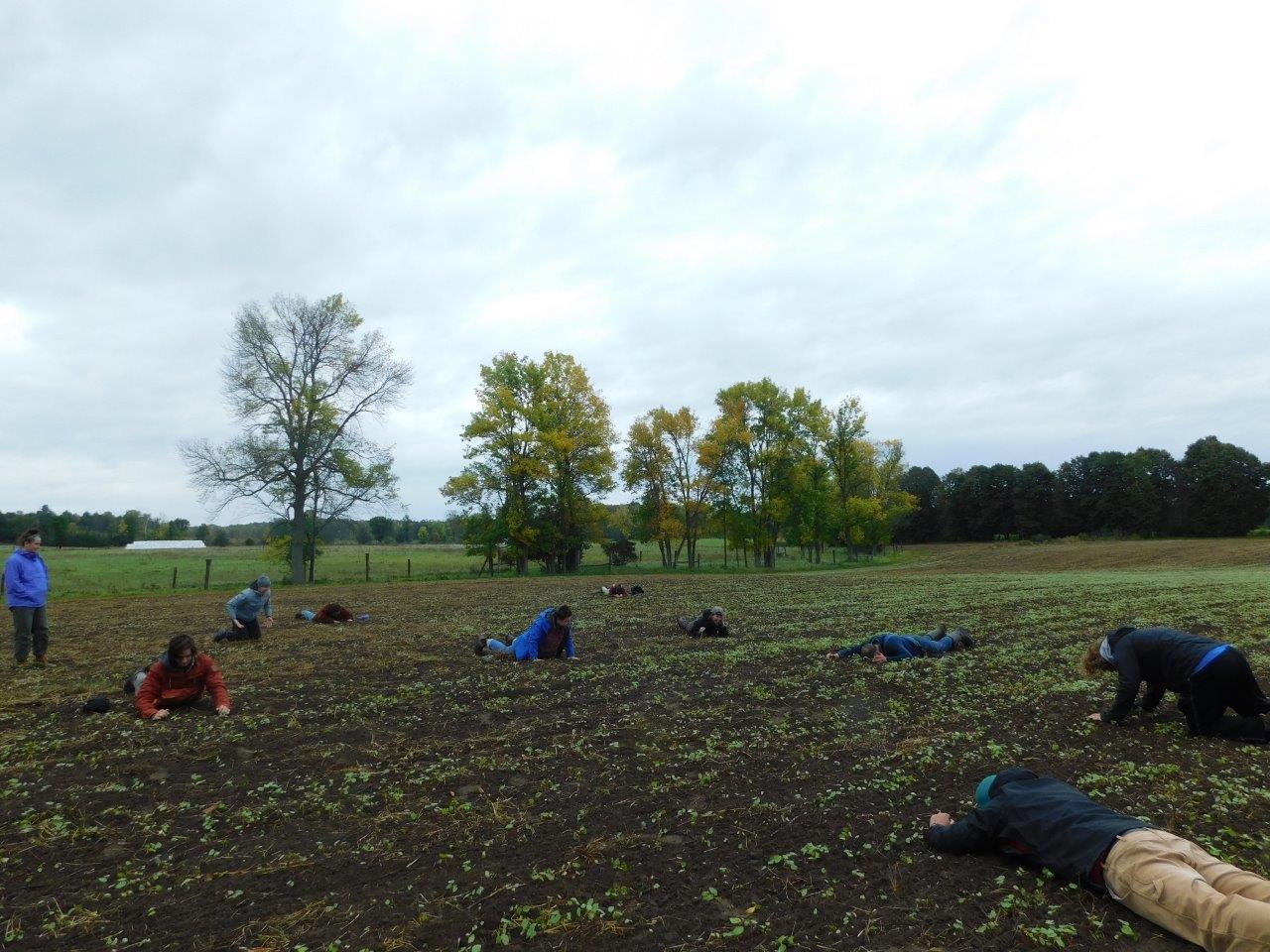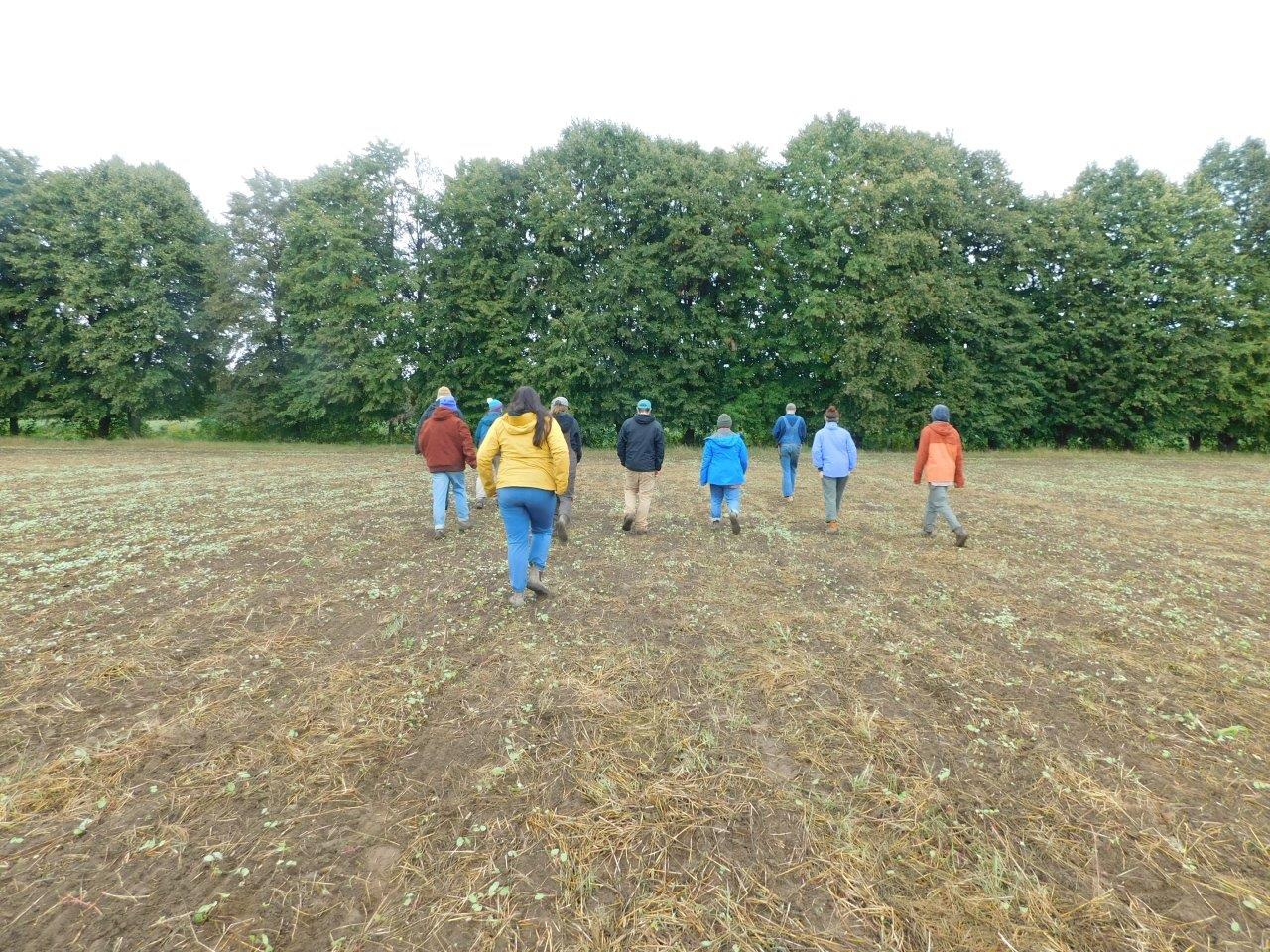From Farm to Table
By John Bernhardt & Robertson Ramos
On most Fridays, after our Creative Expressions of Nature class, we Arcadians lounge around and relax until the ringing of a bell cuts across the village, calling us to the barge where Amanda Colley and Will Madison unload crates full of mail and fresh veggies. With arm veins bulging, we lug the heavy crates to the kitchen and begin to discuss all the potential meals that can be cooked with the week’s supplies. All of our fresh and organic veggies are sourced from the North Country through a community-supported agriculture (CSA) in which the Adirondack Semester participates. Buzzwords like “local, non-GMO, and organic” are often thrown around by environmentally-minded people, but what do these words truly mean?
To find out, one Friday afternoon we changed our routine, loaded into the vans, and headed east toward Essex County, a hub of small farms and a thriving agrarian community in upstate New York. Our goal was to learn from the people who grow “local, non-GMO, organic” food and better understand why these words matter.
The first stop on our enlightening journey was a familiar name for us Arcadians: North Country Creamery. Alongside their signature cow logo in big black bubble letters, this name covers the cap of our yogurt containers. With flavors such as lemon, coffee, and maple syrup, this marvelous dairy product (mixed with some granola) has powered us through many days.
Arriving at our campsite in the dark on an overcast night, we saw a light shining from a building across the road. Donning our headlamps, we began to pitch our tents in a field by the cows so that we could wake up with the sun to help out with the morning chores. Once all the tents were masterfully set up, we headed across the road to investigate the porch light and a sign reading “Farm Store Open.” Entering the shop, we saw walls lined with fresh milk, organic chips, endless supplies of yogurt and cheese, and many more delicious-looking foods. One thing that was missing, however, were any employees. The store was a self-serve shop, meaning that customers come in at any time of day or night and load up their bags. Once finished shopping, they head to the kiosk in the back and record what and how much they are purchasing. Then, using the little kiosk, customers calculate how much they owe and place their money in a small wooden box. For many Arcadians, this store was mind-boggling and inspiring. The culture that North Country Creamery has created with their customers is like the community we hope to cultivate in Arcadia, one built on trust and integrity. With bellies full of pistachio and coffee ice cream acquired from the farm store, we headed back across the road and hit the hay.
The myth that farmers rise early was proven a reality the following morning. We weren’t awakened by a rooster but rather by the sound of fresh dairy products being made right next to where we slept. Ashlee Kleinhammer, one of the owners of North Country Creamery, joined us for breakfast and began to tell us about the operations. Gulping down the last sips of coffee, she took us on a tour of the facilities. Arcadians assisted with moving the cows from the pasture into the milk barn.
The process of milking has evolved beyond what is shown in the cartoons. Now, rather than milking by hand, dairy farmers utilize a complex system of vacuums that makes the process more efficient and enjoyable for both farmer and cow. Ashlee put us right to work by having us assist in prepping the cows for milking. The minor role that we were able to play in milking the cows gave us a little peek into what it takes in order for us to be able to enjoy a glass of milk. This new understanding filled us with a great deal of appreciation for the farmers and animals that help to fuel us on our daily adventures.
Once the last drops of milk had been sucked out, we followed the tubes to the different place where the milk would be transformed into cheese, yogurt, and fresh milk to feed people in the North Country and beyond. The transformation process requires much more science than we had expected! A few small changes at different points in the process would dramatically alter the outcome of the products. Once we had followed the system all the way through, we loaded back into the vans and traveled two minutes down the road to a different farm.
Mace Chasm Farm also works with cattle but for a very different purpose—here the animals are raised for meat. Along with cows, they also raise chickens, turkeys, and pigs. We were welcomed by Asa Thomas-Trainer, farm owner and leader of the five-person butchering team. One of the things that makes Mace Chasm unique is that the entire process, from the birth of the animals to their transformation into saleable meat products, is all conducted on site. Every aspect of the animals’ life cycle plays an important role in the farm ecosystem. Asa rotates where the livestock graze each day. The animals’ manure goes into the soil and fertilizes the grass that the other animals will eventually consume. Once the livestock have reached the proper size, they are slaughtered and then butchered in the on-site butcher shop. Finally, the unusable parts are composted and eventually spread across the pastures to enrich the soil as well.
Standing in the rain, water droplets sliding off our brightly colored rain coats, we stared at a group of newborn piglets who were on the first step of this journey and listened attentively as Asa explained the importance of being connected to where your meat comes from. The meat industry is one that can destroy the environment and cast animals into a life of misery, or meat farmers can help to restore the environment and give livestock the best possible life. Growing up a vegetarian, Asa chose this second path at Mace Chasm Farm.
As we walked across the grassy pasture, water soaking through our boots, a curious Arcadian asked Asa why he chose to farm. “It’s all about community,” he replied. Taking off his Essex Brewing Company hat, he ran his fingers through his hair and continued. “I give meat to the brewery across the street and they host our town barbecues. During the summer, our barn is transformed into a live music venue. Families come to the farm store and can stock up on delicious, ethically-raised meat. I’d be just as happy building mountain bike trails, but I wouldn’t be able to make the same impact as I can here.”
Living out that message, Asa offered to let us take protection from the elements in his barn while we enjoyed some of the delicious delectables we’d gotten that morning. Once there was nothing but empty wrappers from cheese and meat packages and a few crumbs of freshly baked sourdough bread, we once again loaded into the vans and headed to our last farm visit of the day.
Twenty minutes later we were greeted by a tall friendly giant, waving his arms wildly and hollering, “Welcome to Essex Farm!” This man would later introduce himself as Mark Kimball, one of the owners of Essex Farm (which you can read about in his wife Kristin Kimball’s popular books, The Dirty Life and Good Husbandry). Decked out in denim overalls with a belt around his waist, and wearing a pair of floppy muck boots, Mark certainly fulfilled our image of the iconic farmer, but his energy was unlike anything we could have imagined.
When Mark asked us what we wanted to see, and Roisin responded “soil,” Mark took off running, his boots thumping, and we chased him across the fields. Once out in an empty field, he instructed us to bury our faces in the dirt. As we breathed in the nutrient-rich soil, Mark began to explain how different the soil can be depending on the conditions, inputs, and depth. The deeper our faces went in, the more we’d uncover. Just like how sitting around the kitchen table, around a campfire, or in the sauna, we had begun to uncover deeper layers of our Arcadian community.
This activity also served as a warm-up for the next few activities that would force us to continue to step out of our comfort zones. In the next field over, while eating raspberries, Mark asked us big questions like, What are we hoping and looking for? What is the meaning of life? With pink sticky juices running down our hands, we tried to answer these answerless questions. In another field, we covered ourselves in grass clippings and played make believe. The final stop was the sheep pasture. Jumping over an electric fence, we were surrounded by 200 sheep. Over the baahhing of the sheep, Mark told us about the beauty of farming, which is the same as the beauty of life: it is what you make of it.
With our feet wet, our faces covered in dirt, and our bellies full, surrounded by a flock of sheep and more importantly by friends, we stood in silence and stared off into the distance at the setting sun. Letting the wisdom of the people we’d met today soak into us, our hearts filled with gratitude toward all those who keep the world full.

